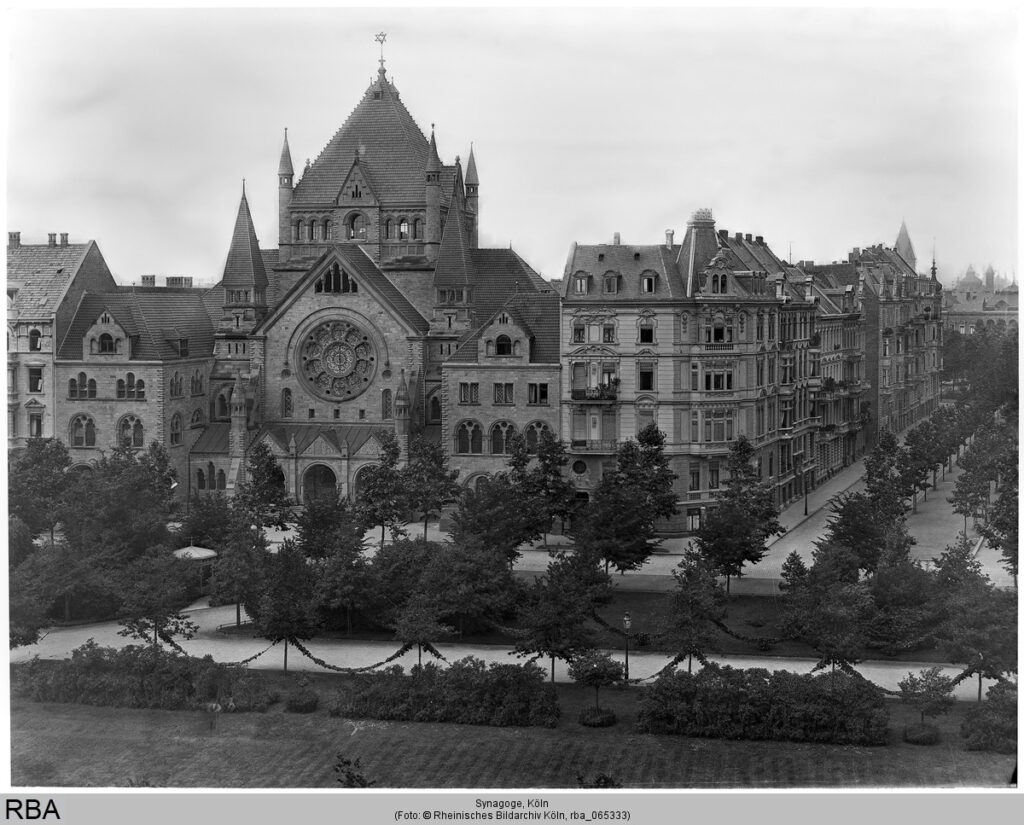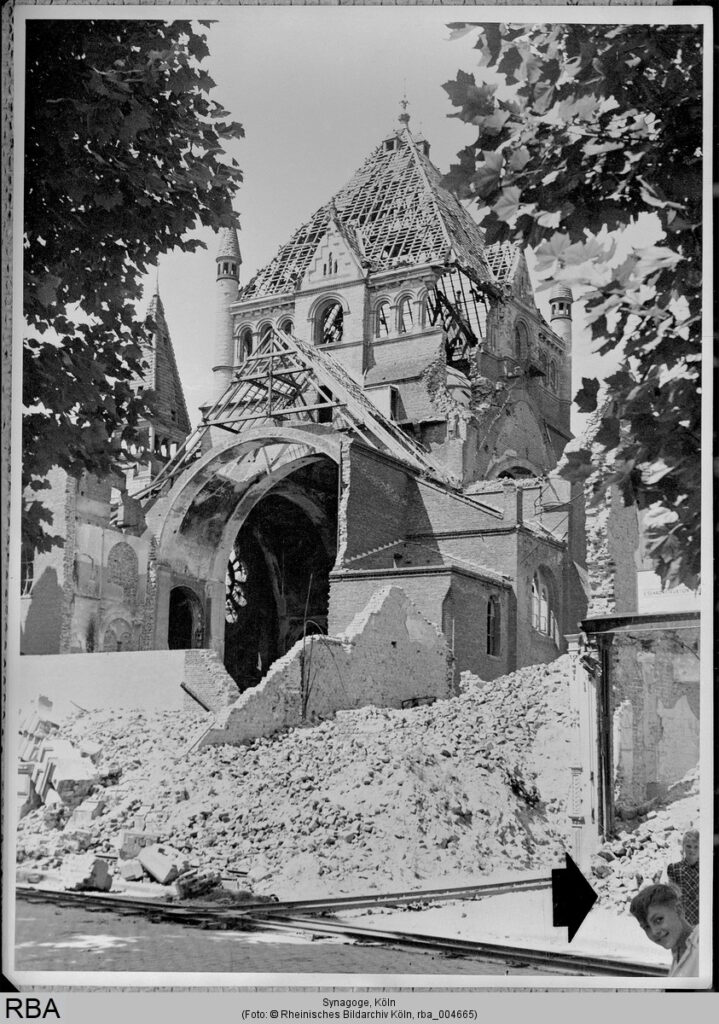The synagogue on Roonstrasse looks back on an eventful history: Completed in 1899, it shaped both Cologne’s cityscape and inner-Jewish developments. In accordance with the reforms in the nineteenth century, the bema, the elevated pulpit for the weekly reading of the Torah, was no longer located in the center of the room, but moved to the east side near the Torah shrine. Another characteristic of the reform orientation of the members of the congregation was the desire to install an organ—this led to a break with the orthodox members.
During the Nazi regime, the synagogue congregation developed into a central place of help and support for the persecuted Jews of Cologne. Nevertheless, they had to watch defenselessly as their synagogue was set on fire and cult objects desecrated or stolen. In mod-1941, the Nazi authorities declared the building complex behind the synagogue a ghetto house. Among the forcibly confined and later deported were the last Cologne rabbi Isidor Caro and his wife Klara.
In April 1945, survivors of the Shoah founded a new congregation in the ruins of the synagogue. The dedication of the rebuilt synagogue took place in 1959 in the presence of the German Chancellor Konrad Adenauer and the Cologne Rabbi Zvi Asaria.
Roonstrasse continues to be the cultural and religious center, as well as the official seat of the synagogue congregation of Cologne, which today boasts roughly 5,000 members.

Left: Exterior view of the synagogue on Roonstrasse, ca. 1900. Source: Rheinisches Bildarchiv, Signature: RBA 004665.
Right: Ruins of the synagogue on Roonstrasse, shortly after the end of the war. Source: Rheinisches Bildarchiv, Signature: RBA 065333

Timeline Cologne
- ↑ The resistance of Richard Stern – April 1, 1933
- ↓ The Glockengasse Synagogue – Juni 30, 1857
